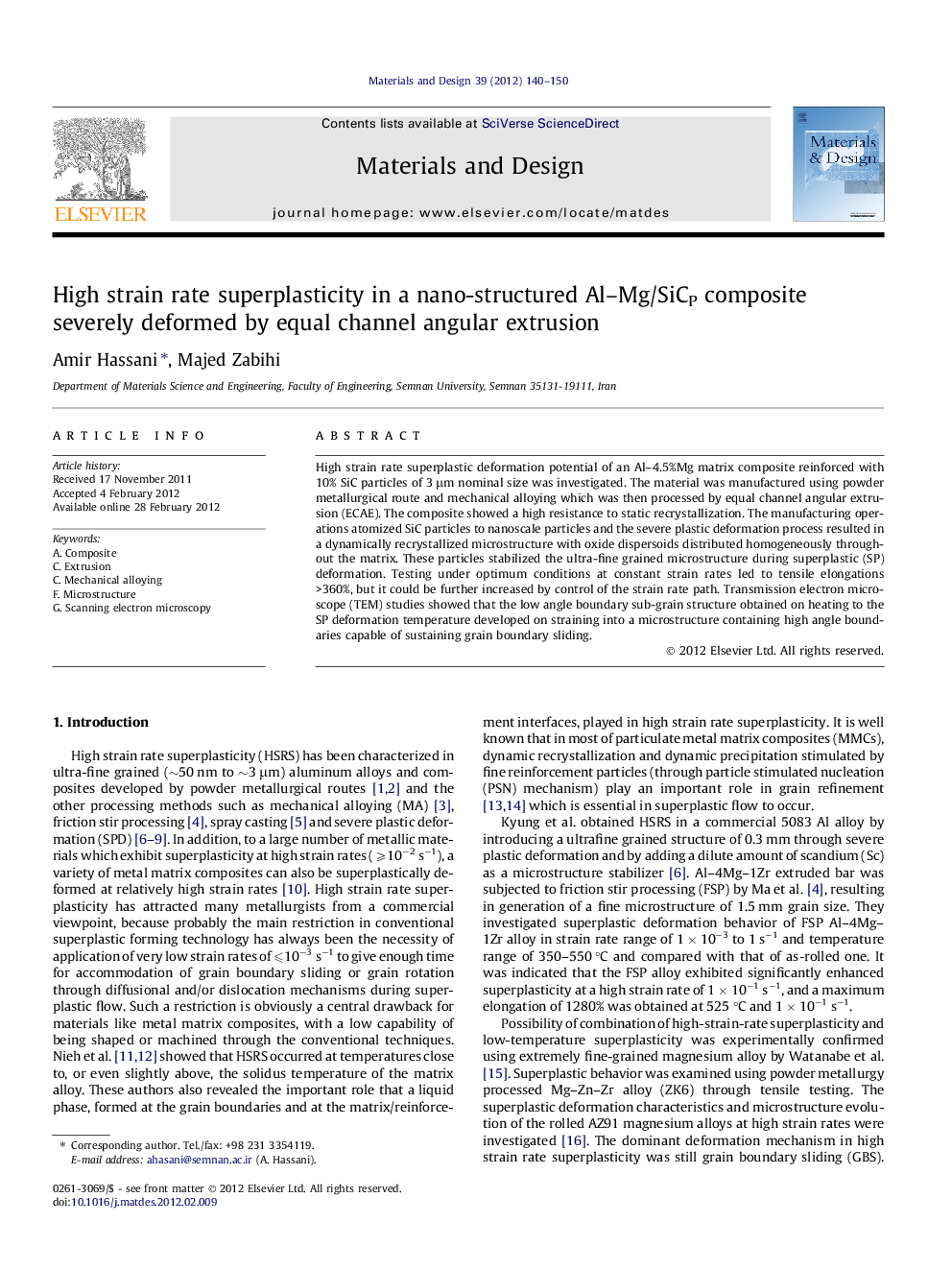| Article ID | Journal | Published Year | Pages | File Type |
|---|---|---|---|---|
| 830658 | Materials & Design (1980-2015) | 2012 | 11 Pages |
High strain rate superplastic deformation potential of an Al–4.5%Mg matrix composite reinforced with 10% SiC particles of 3 μm nominal size was investigated. The material was manufactured using powder metallurgical route and mechanical alloying which was then processed by equal channel angular extrusion (ECAE). The composite showed a high resistance to static recrystallization. The manufacturing operations atomized SiC particles to nanoscale particles and the severe plastic deformation process resulted in a dynamically recrystallized microstructure with oxide dispersoids distributed homogeneously throughout the matrix. These particles stabilized the ultra-fine grained microstructure during superplastic (SP) deformation. Testing under optimum conditions at constant strain rates led to tensile elongations >360%, but it could be further increased by control of the strain rate path. Transmission electron microscope (TEM) studies showed that the low angle boundary sub-grain structure obtained on heating to the SP deformation temperature developed on straining into a microstructure containing high angle boundaries capable of sustaining grain boundary sliding.
► HSRS deformation potential of a particulate aluminum composite was investigated. ► It was produced using PM route, MA and finally ECAE processing. ► SPD resulted in dynamic recrystallization while static one did not occur. ► Nanoscale SiC and oxide particles were produced during MA and SPD operations. ► Testing under optimum conditions led to SP deformation.
